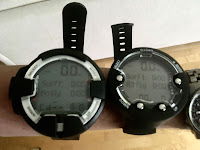Latency - the new black?
In this posting, we'll explore why latency matters. We shall proceed to explain why edge cloud architectures such as Multi-access Edge Computing (MEC) are important enablers for low latency and why that matters.
I have been using mobile data all the way from circuit-switched (CS) data in GSM to GPRS/EDGE to UMTS to LTE. The first data-enabled device was the legendary Nokia Communicator, complete with tiny keyboard and e-mail application. At the moment I'm using Nokia 6 for work and iPhone 8 for personal use. Things have gotten better quite a bit better during the last twenty years.
The most obvious improvement for laypersons is the impressive reduction in the delay with which content is opened in the handset. It is affected by both an improvement in the processing capacity of the handset and the data transfer speed. Improvement in processing power of handsets has been great, but not in scope of this article; let's just refer - tongue firmly in cheek, of course - to the movie "Iron Sky" where a mobile device provides computing power for spaceship.
Mobile data
Not so long ago, this explanation would have been based on personal computers. Nowadays, folks use mostly handsets so let's talk about mobile data.I have been using mobile data all the way from circuit-switched (CS) data in GSM to GPRS/EDGE to UMTS to LTE. The first data-enabled device was the legendary Nokia Communicator, complete with tiny keyboard and e-mail application. At the moment I'm using Nokia 6 for work and iPhone 8 for personal use. Things have gotten better quite a bit better during the last twenty years.
The most obvious improvement for laypersons is the impressive reduction in the delay with which content is opened in the handset. It is affected by both an improvement in the processing capacity of the handset and the data transfer speed. Improvement in processing power of handsets has been great, but not in scope of this article; let's just refer - tongue firmly in cheek, of course - to the movie "Iron Sky" where a mobile device provides computing power for spaceship.
Data transfer speed
The speed with which data is transferred is more relevant to this post. In some circles, it is also called "bandwidth", but this is technically confusing in context of signal processing so we'll shun that for the rest of this post. Transfer speed tells how many bits are transferred per second. Depending on the subscription, data transfer speeds in 4G networks are typically measured in megabits, or millions of bits per second.
Transfer speed is determined by the medium used (radio / copper cable / optical fibre) as well as supporting technology. In the case of mobile networks, the radio frequency as well as the infrastructure (base stations and handsets) have evolved from GSM to LTE, and will continue to do so for 5G. Communication System Providers (CSPs) provide a variety of end user products with differing levels of service quality. Transfer speed is one of the differentiating factors between subscription packages.
Technically, data transfer is implemented with radio and Internet protocols which ensure that data are transferred correctly. Due to the protocols employed, the latency - or the time a bit takes to travel from the sender to the receiver - becomes a limiting factor once data transfer speed is sufficiently high.
Latency
So what do we know about latency? I have optical fibre connection to Internet at home, and the delay to my company's intranet is a few milliseconds, or thousandths of a second. For mobile data, delay from sender to receiver was a couple of hundreds of milliseconds with GPRS/EDGE, and is of the order of 10 milliseconds in LTE. 5G networks will support end-to-end delays of milliseconds, or about the same as for my computer connection from home to company intranet. A lot of research has gone into getting the delay down to this small numbers. This level of latency allows mobile data transfer speeds to grow a lot higher from what they are at the moment.
Low latency has other benefits, too. Applications have been identified which require the performance provided by 5G networks. Remote control of machinery, road safety related data exchange between vehicles, and medical data monitoring are classes of such applications.
So what affects the latency? We already mentioned that protocols are related to latency. Easily verifiable with pen and paper, it turns out that millisecond-level latency sets a limit for the maximum geographical separation of the sender and the receiver. The speed of light in vacuum is approximately 299,792,458 metres per second, or about 300 kilometres in a millisecond, and in optical
fibres about 2/3 of that number.
Edge clouds such as MECs in mobile network bring data centres close to the customers and hence enable
millisecond-level delays without breaking the laws of physics (or beaming Scotty down from the
Enterprise).

Comments
Post a Comment